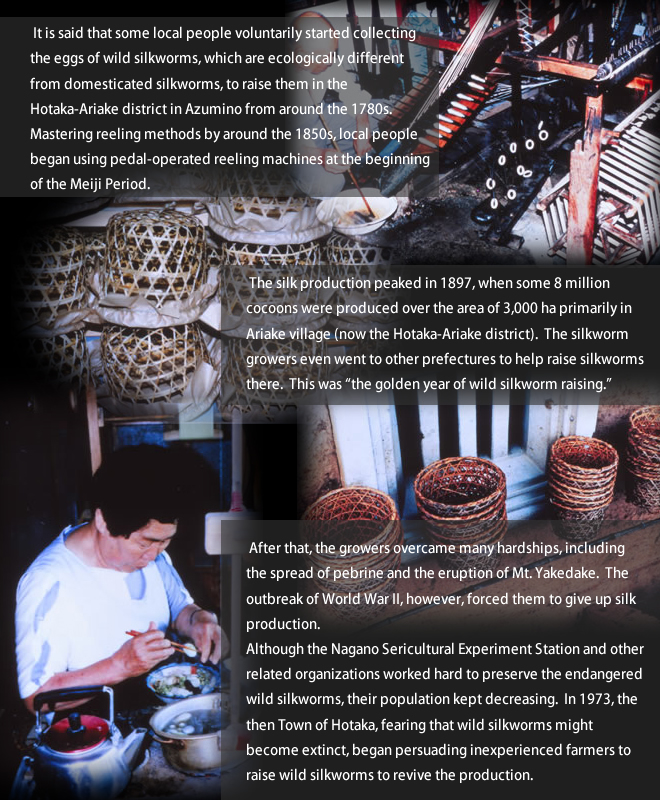- home >
- Azumino ? home to Tensan
Azumino ? home to Tensan
Azumino, located near the center of Nagano prefecture, sits at the foot of Northern Alps.
The natural splendor, including clean air and water, still remains here, recalling the nostalgic Japanese scenery of bygone days to our mind.
Wild silkworms have long lived in the unspoiled natural environment of Azumino.
Since their rearing is significantly affected by the habitat environment, our predecessors have had to overcome many hardships over the long history.
Indeed, coexistence with nature has always been our first priority.
History of wild silkworm raising

Chronological table
| Years | Description |
|---|---|
| 1781~1788 | The rearing of wild silkworms started in the Hotaka-Ariake district (then Ariake village) in Azumino. |
| 1849~1853 | Silk production started (producing 1.5 million cocoons). |
| 1854~1859 | Silkworm raising forests set up (producing 3 million cocoons). |
| 1877 | Silkworm growers go to Ibaraki and Tochigi prefectures to help raise silkworms there. |
| 1887~1897 | Production peaks, producing 8 million cocoons over the area of 3,000 ha centering around Ariake village. |
| 1902 | The outbreak of pebrine and warble flies. |
| 1908~1912 | Silk production deteriorates due to the significant damage of falling ash of Mt. Yakedake. |
| 1913 | The wild silk production union established (membership: some 200). |
| 1915~1924 | Silk production revives, producing four to six million cocoons nationwide. |
| 1943 | Silk production suspended due to the outbreak of World War II, leading to the deterioration of the industry. |
| 1947 | The Matsumoto branch of Nagano Sericultural Experiment Station established in Ariake. |
| 1947~1972 | Wild silkworms raising continued in the experiment station to preserve the species. |
| 1973 | The then Town of Hotaka begins silkworm raising by persuading inexperienced local farmers. |
| 1977 | Tensan Center built. |
| 1979 | Azumino City Tensan Promotion Association founded. |
| 2009 | The association has managed Tensan Center as its official manager designated by Azumino City. |
